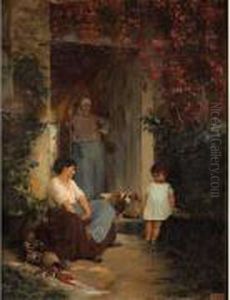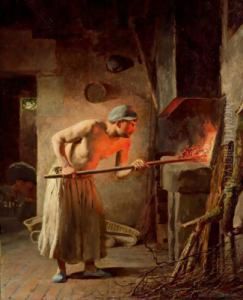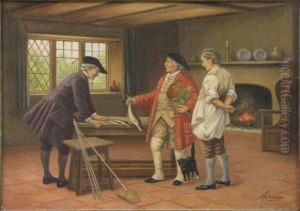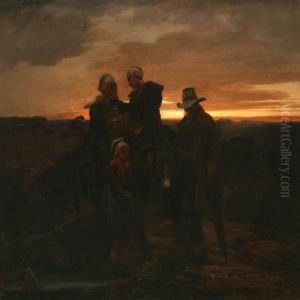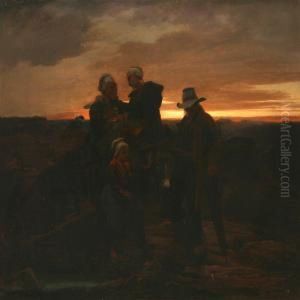Amable Louis Schneider Paintings
Amable Louis Schneider was a French artist known for his contributions to the world of painting and engraving during the 19th century. Born in 1826, Schneider lived through a period of significant transformation in France, witnessing the shifts from the July Monarchy, through the Second Republic and Second Empire, to the beginnings of the Third Republic. Despite the political upheavals of his time, Schneider managed to carve out a noteworthy career in the arts, focusing on the romantic and picturesque aspects of French life and landscapes.
Schneider's artistic journey began in earnest when he enrolled at the École des Beaux-Arts in Paris, where he studied under the tutelage of prominent artists of the time. His education grounded him in the classical traditions of painting and engraving, yet he was also influenced by the emerging trends of realism and naturalism, reflecting a keen interest in depicting the world with an honest, unembellished eye. Throughout his career, Schneider exhibited his works at the Paris Salon, a prestigious venue that was the heartbeat of the French art world. His submissions, often praised for their technical skill and emotional depth, garnered him a respectable reputation among his contemporaries.
Schneider's oeuvre is characterized by its diversity. He was adept in both oil painting and engraving, allowing him to explore a wide range of subjects, from serene landscapes and rural scenes to more intimate portraits and genre scenes. His landscapes, in particular, are noted for their meticulous attention to detail and ability to capture the transient beauty of the natural world. These works often evoke a sense of nostalgia and tranquility, inviting the viewer to partake in the serene moments of rural French life.
Despite his success, Amable Louis Schneider did not achieve the same level of fame as some of his contemporaries. His work, however, has been appreciated for its contribution to the 19th-century French art scene, particularly in the realms of landscape painting and engraving. Schneider's legacy is that of a dedicated artist who sought to capture the essence of his environment, offering a window into the pastoral and idyllic aspects of France during a time of great change. He passed away in 1903, leaving behind a body of work that continues to be studied and admired for its artistic quality and historical significance.
